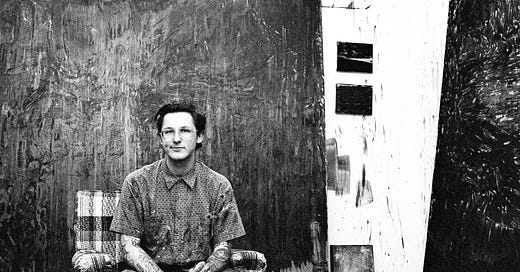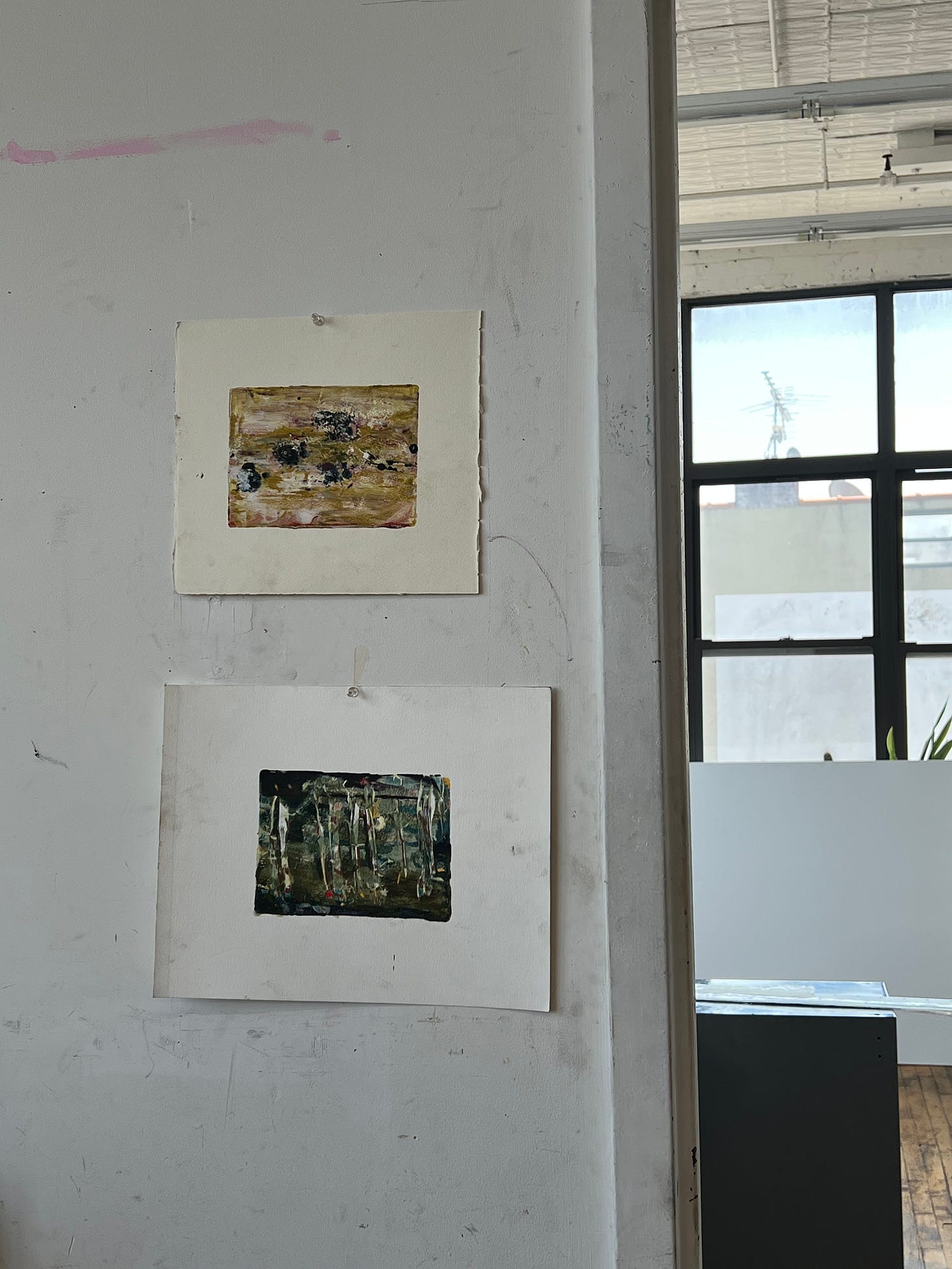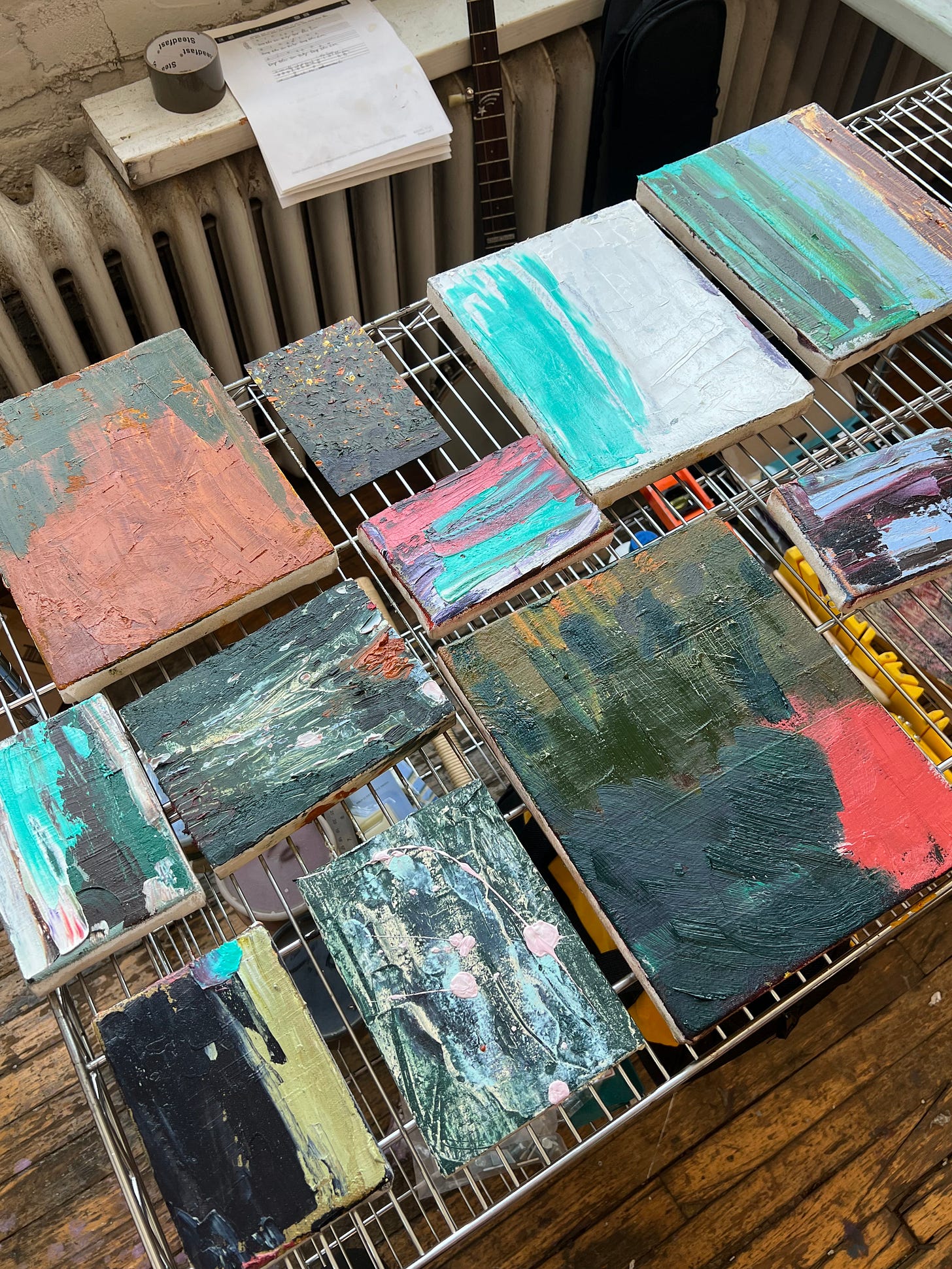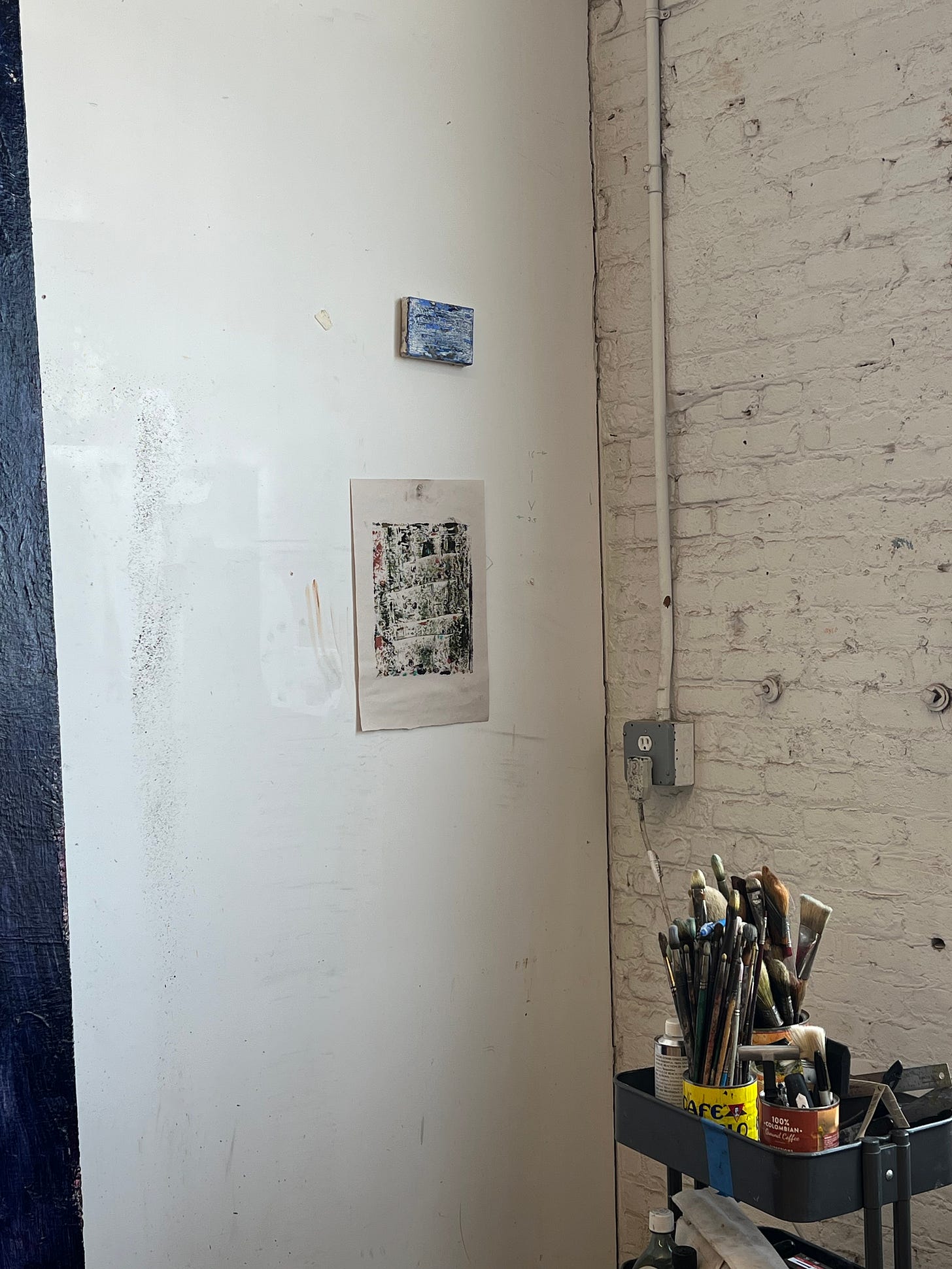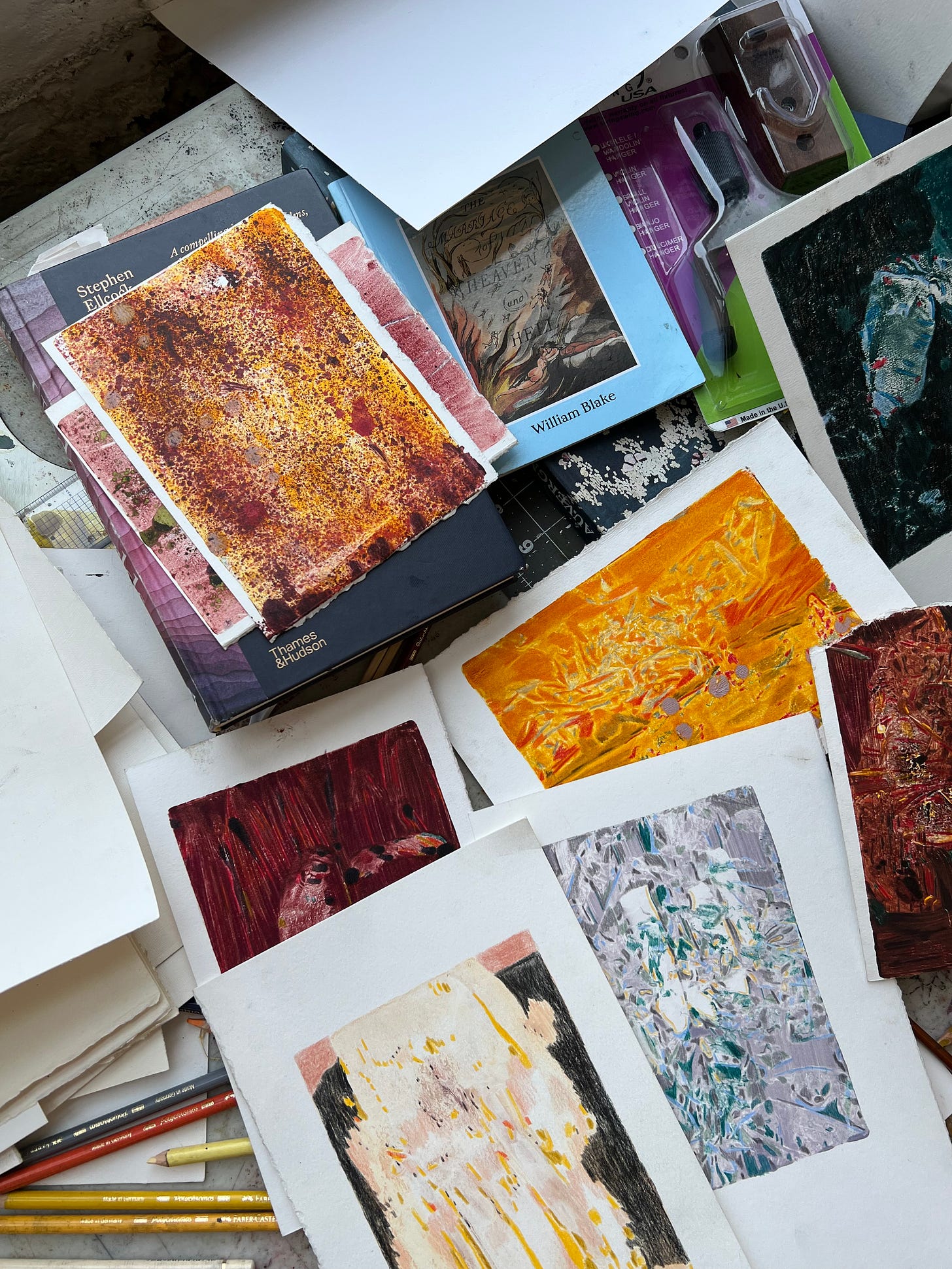Jacob Littlejohn is a name to know. Jacob connects to the psychological landscapes that exist both within individuals and inherited across generations. Abstract renderings created with an array of application techniques (including one involving a plastic trash bag) spill out of the artist as he journeys through his memories, source material in the form of old postcards and classic literature, and passed down stories. Jacob’s work reminds us that nature is omnipresent and all consuming, even in a machine age.
Name: Jacob Littlejohn
Mode: Painting
Homebase: Brooklyn, NY
INSIDE THE STUDIO
How far along do you typically have to be in a work to know if it is successful or not?
That’s a tough one. I think the more time that passes, the clearer it is to make that judgment call—so the longer it takes to consciously decide the success of something the better I guess. For me, feelings of success can also be fleeting. For better or worse I’m quick to spot the limitations of a work. That might sound a bit bleak, but in a way, it’s what keeps me searching and moving forward.
I guess there is a more immediate sense of satisfaction instead of success that’s easier to recognise, but I tend to be cautious of that. It’s good that to have a little time and distance from the work to allow more of a trustworthy perspective to form—to make sense of the emotion, idea or intuition that initially led you somewhere. I guess after this it’s more likely to achieve a success
What has been a tipping point in your career thus far, where you felt things shift significantly either in your practice or career?
I think a pivotal moment in my practice that stands out was studying at the San Francisco Art Institute, despite what happened to the School in the end. The classes were particularly rigorous and led by the amazing teachers there. The combination pushed me to consider a little more what I was making and why—questions that continue to shape my work today.
Moving to New York City also marked another significant shift, I think because of the scale and intensity of the art world was like nothing I had seen before. Coming from Scotland, then studying in San Francisco, and finally getting to NYC allowed me to experience three unique cultures in short succession, which was really amazing for me, but I’d really left the best for last. There’s an overwhelming amount to see, to do, and so many people to meet and learn from. I’m trying to absorb as much as I can while I’m here—because who knows what’s going to happen next the way things are shaping up in the world.
What is a part of your background that consistently finds its way into your work?
I grew up in Edinburgh, Scotland, and I think much of what influences my work stems from quieter spaces and moments of relative solitude. When I was younger I spent most of my time outdoors, exploring and doing pretty much anything that kept me outside—I barely remember being in my room at all.
That resistance to staying in one place, and the curiosity about what’s outside, has continued to shape my practice. It comes from a fascination with my surroundings and a desire to understand how seemingly quiet, unassuming things can have a profound impact on us. I was also brought up listening to a lot of stories that were read to me, which is another thing that continues to inform the work I make.
OUTSIDE THE STUDIO
Do you have any reoccurring daydreams?
I wish, I used to have a reoccurring nightmare though. I would fall into a swimming pool full of sharks every night.
What is one misconception about Scots?
That we are Irish or don’t speak English.
What is something a part from painting that you are passionate about?
I’m really into cycling, reading, and I’ve recently been trying to learn the banjo.


